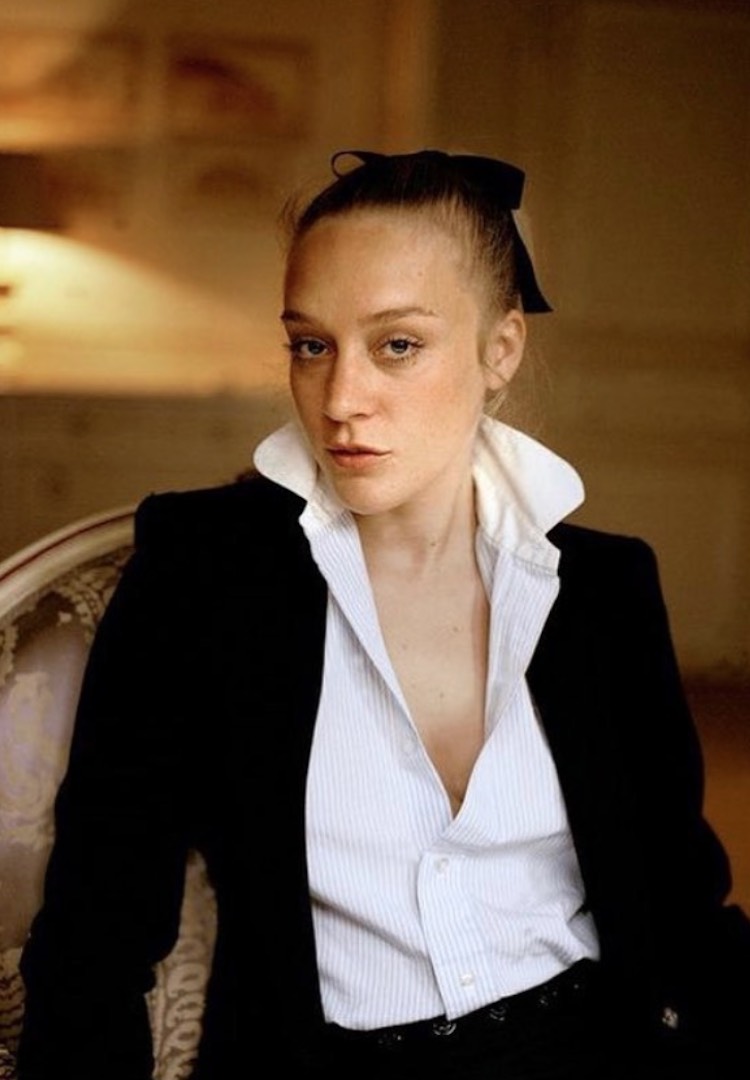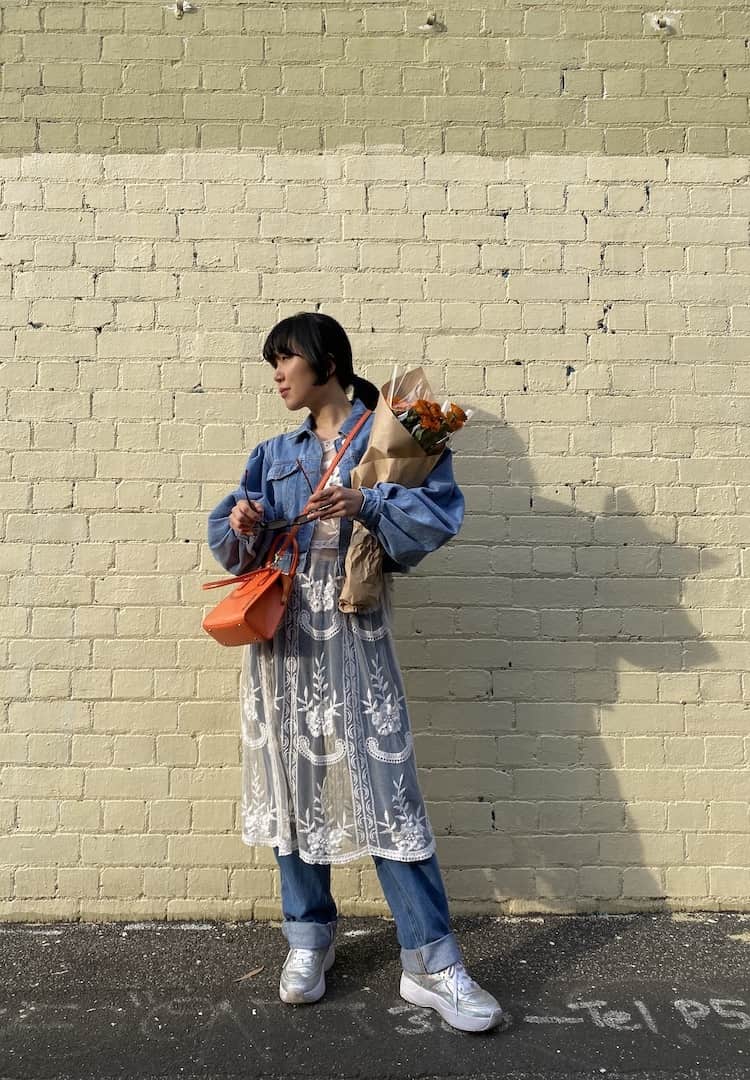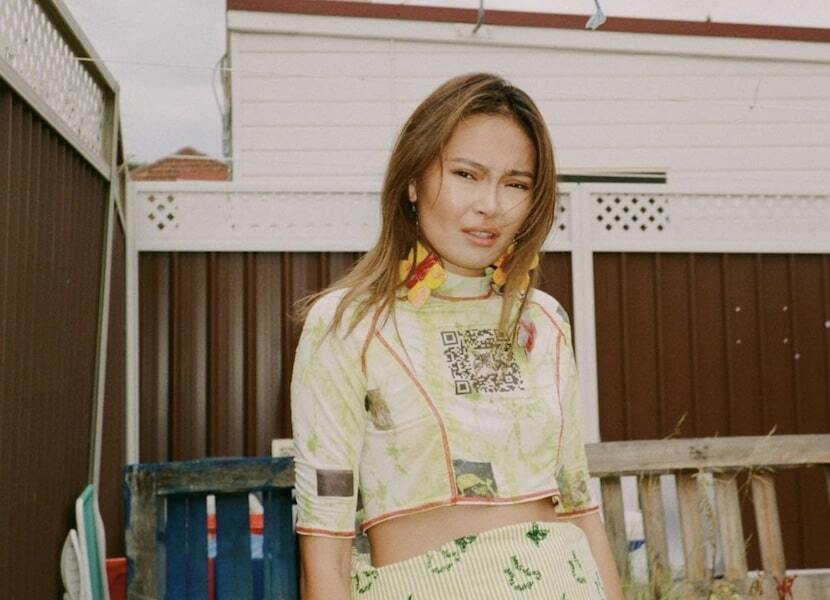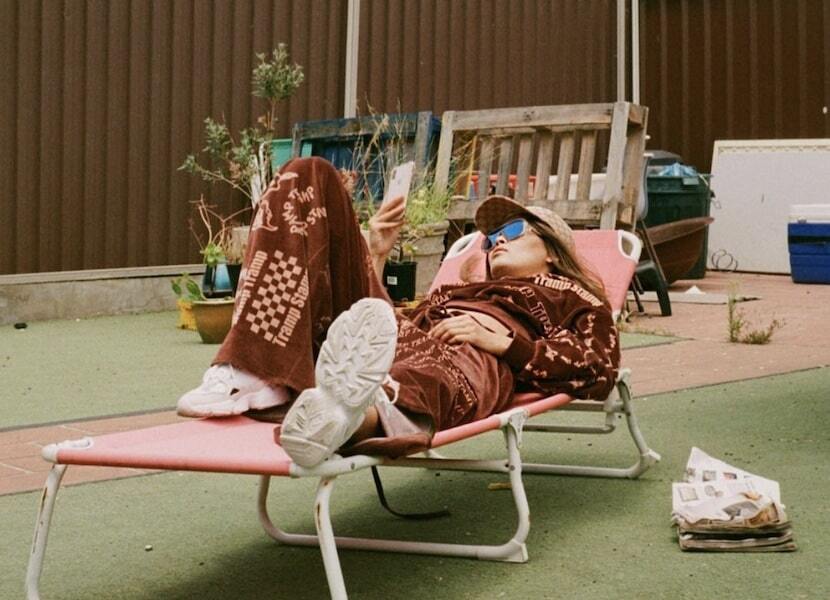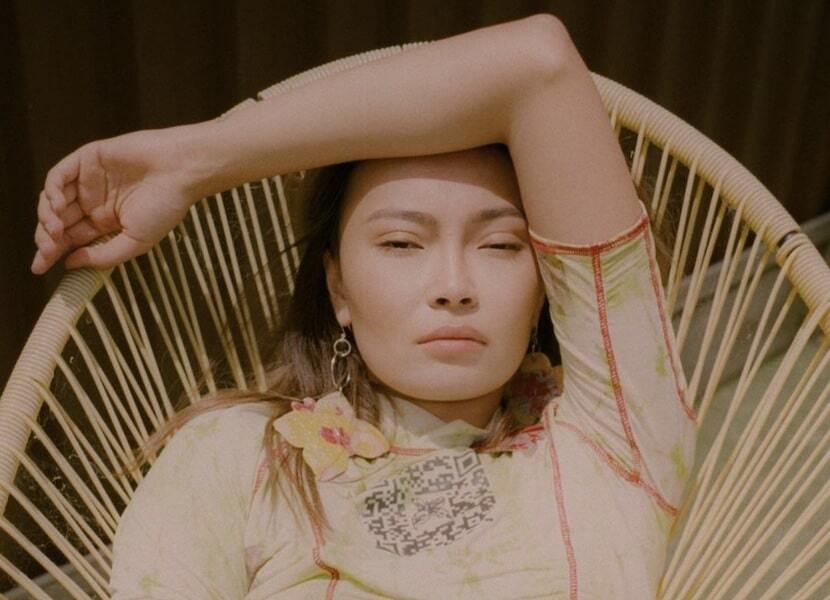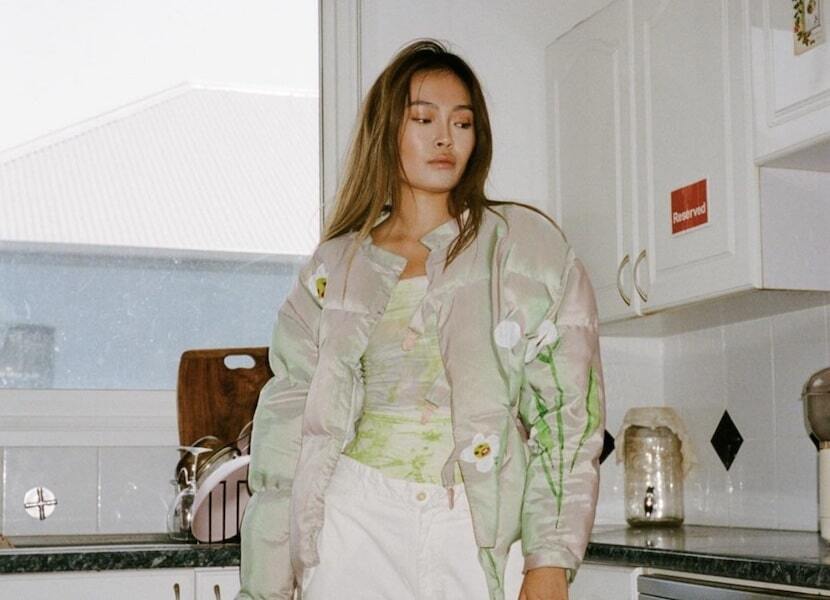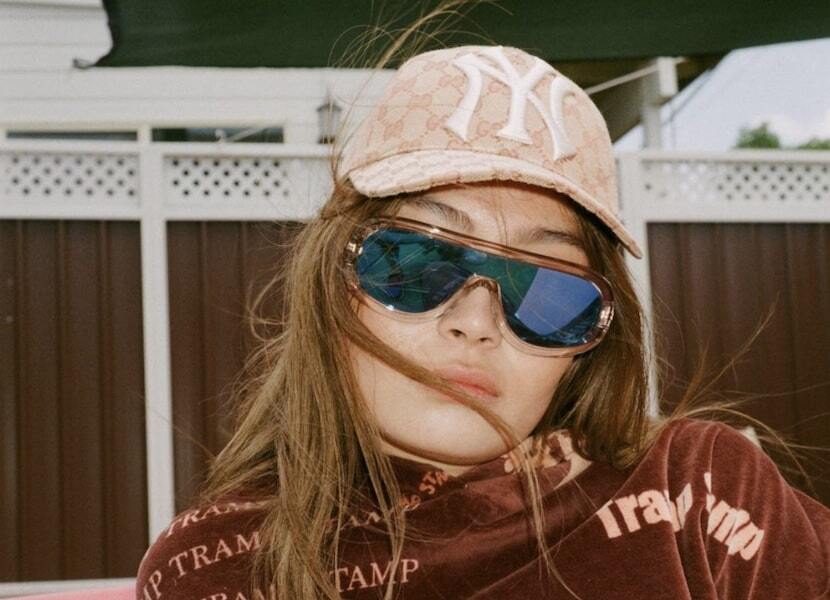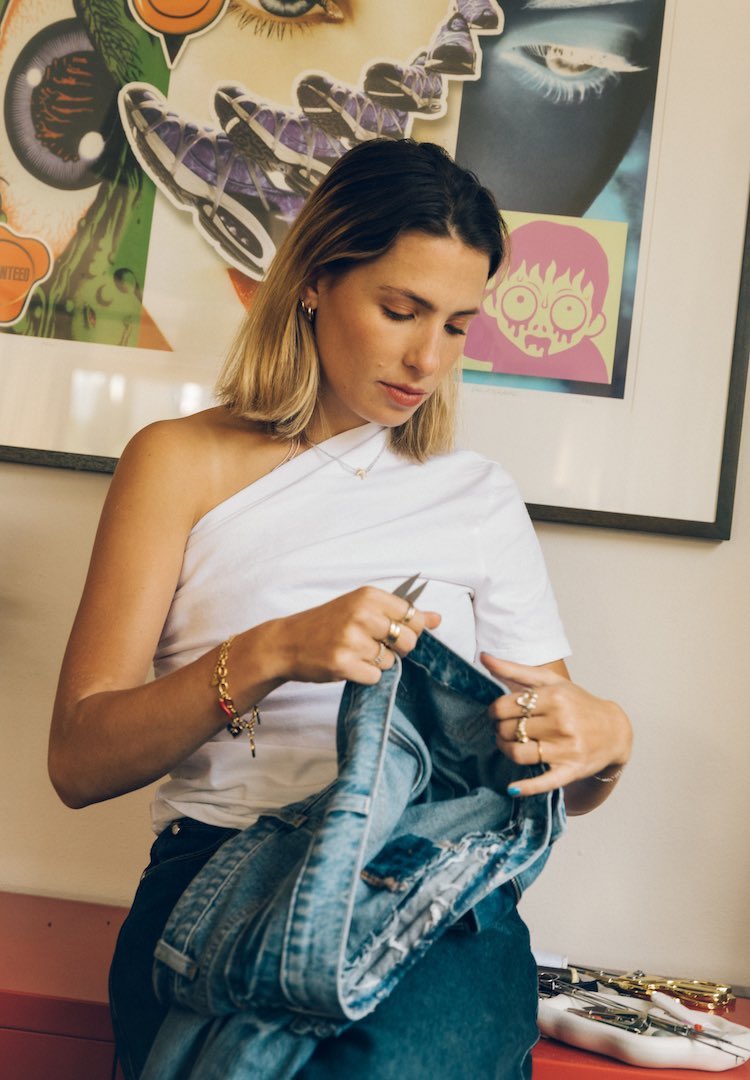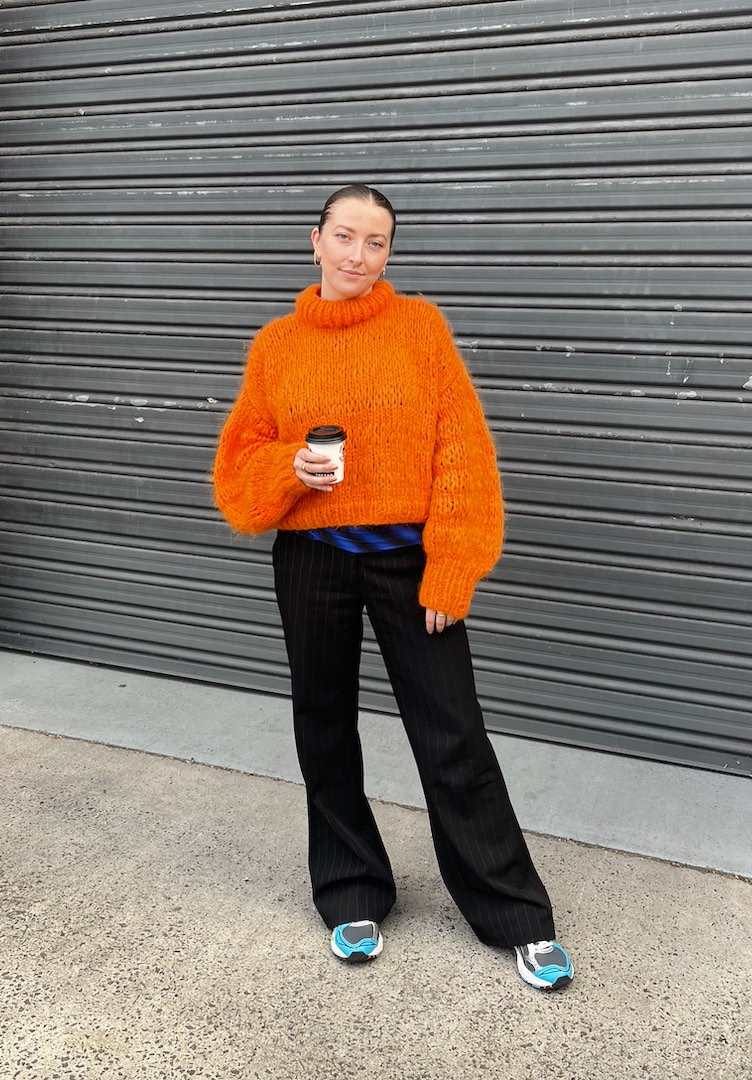How Sydney label Ramp Tramp Tramp Stamp is prioritising inclusivity through fit-flexible designs
PHOTOGRAPHY BY ROMAN JODY
WORDS BY JASMINE SHEPARD
Form-fitting fashion designed to flatter a range of bodies.
After a transformative gap year in Los Angeles interning at the prestigious fashion label Eckhaus Latta in 2017, Niamh Galea sought to bottle her love of fashion in a radical way. Returning to her Sydney home to complete her degree, Niamh named her graduate collection and its associated Instagram page Ramp Tramp Tramp Stamp. Soon after, the label exploded.
Reminiscent of the LA skater boy culture Niamh fell in love with, Ramp Tramp Tramp Stamp is a nostalgic nod to ’90s velour tracksuits, but with a rebellious flavour. Think geometric G-strings cut from repurposed fabric scraps, through to matching tracksuits printed with brash, juxtaposing artwork.
For more on size-inclusive designs, head to our Fashion vertical.
The label is able to empower all bodies through its progressive, fit flexible design style. Each sample is created to fit regardless of size or gender. Niamh pooled her experiences in high fashion to convert basic principles of fabrication, corseting and belt mechanisms to ensure inclusivity, without compromising on form.
I spoke to Niamh about the deeper meaning behind the brand’s playful name, the structural process behind creating fit flexible garments and the retail studio space currently in the works.
Lovely to meet you Niamh! Tell me a bit about Ramp Tramp Tramp Stamp.
I started Ramp Tramp Tramp Stamp kind of by accident. It was originally a process journal Instagram account for my Fashion Honours at the University of Technology Sydney. I started selling a few things through the online store, Terminal Six. When COVID hit, I was living in New York to do my masters at Parsons School of Design. I lost my job, the school closed down, so I had to move back to Sydney. I started making things more intensely while I waited to go back to school and it just sort of spiralled.
What is the driving force behind your creative practice?
I love fashion so much. It is the greatest love of my life. But I am also very aware of all of its flaws. And I am a size 20. As someone who loves fashion, but often won’t fit the clothes that I would love to buy, I have personally been marginalised by it. I have seen some of my friends be marginalised by the fashion industry in other ways, because of their queerness, their race, or age. I try to make clothing that they can wear. That allows us in.
I love the name Ramp Tramp Tramp Stamp. How did it come about?
I went to live in LA which was pretty much a life-changing experience for me. I met my best friend Lizzy, we were both new to the city and were having a sort of sexual awakening. We were obsessed with skater boys. And one day a skater boy said to me, “Oh my god you are such a ramp tramp”. He meant it as an insult, but I thought that was amazing! So that was the starting point.
View this post on Instagram
Through your brand, you’re focused on empowering marginalised communities. Did the brand name intentionally reflect this?
It’s funny, it was never intended to be a brand name or even really to have so much significance. Later on, I realised a big part of what I’m trying to do with my brand is take things that people are taught to feel shame about and turn them into something empowering.
For example, if you’re told you are too fat to wear a tight dress, that’s exactly what you should wear. I realised all these marginalised communities are subcultures with sub-cultural slurs, like ramp tramp is essentially a slur within the skater community. So the name has grown to be really important to me.
Did you always have a clear vision for the trajectory of Ramp Tramp Tramp Stamp?
I went into designing my first collection with very clear ideas about wanting it to be size inclusive and gender-inclusive. I wanted it to capture all the learning I had done while in LA, and the power that I had felt there that I hadn’t really felt before.
Your label challenges the traditional Australian sample size. How was the idea for fit flexible clothing born?
When I was back in fashion school, we would slave away on these samples. It wasn’t very long into the term that I realised, fuck this, I would kill myself making these samples and then I wouldn’t be able to wear them. I started to make the clothing in a way so that it was fit flexible. It was still able to fit the sample size model so I wouldn’t fail, but also so that it would still fit me.
View this post on Instagram
What does that process look like practically?
There is definitely no formula. Basically, I think about mechanisms that can shrink and grow. Knit and elastic can shrink and expand quite easily. Corsets, funnily enough, are actually great for fit flexibility, because of the lace-up mechanism. Belts can be made bigger or smaller depending on the wearer. But size flexibility is also about showing people that [sizing] is kind of made up. Bodies are squishy.
How do you ensure your collections are gender-fluid?
I was living with one of my dear friends at the time, who is trans, who had issues with clothing not fitting their gender identity. Fit flexibility can be used to emphasise an hourglass shape, which they don’t naturally have, to create gender-affirming silhouettes. In the same way, if someone is more masc identifying, it’s about creating silhouettes that are heavier on top. There is such a rich history in fashion of gender, we can’t deny that. But you can play with that in a way, ham it up or pull it down to question the stereotypes.
What are your biggest creative influences when designing?
It’s definitely always my personal experiences, like my love, friends, who I am around at that moment. Even what I am eating at the time. It can be that small.
View this post on Instagram
Many young designers focus on sustainability in their designs. How are your designs sustainable?
I think of sustainability as something that should be a given. I try mostly to work with second-hand regenerated textiles. I source most of the fabrics from Reverse Garbage, they get really massive bulk quantities of this really interesting, beautiful deadstock or vintage textiles. But I don’t think we can ever claim to be sustainable in fashion, because fashion by its nature encourages people to consume and to buy clothes that go above and beyond need into the realm of want.
What’s next for Ramp Tramp Tramp Stamp?
I have just moved into a new studio space! I am planning with my cousin, Ed Cook, who is an amazing architect, to have a mini retail space in the studio, so people can try on my pieces. I also want to stock some of my friends who are small designers as well.
Keep up with Ramp Tramp Tramp Stamp here.

